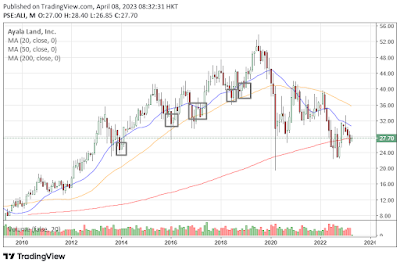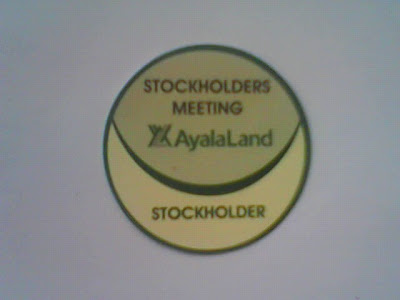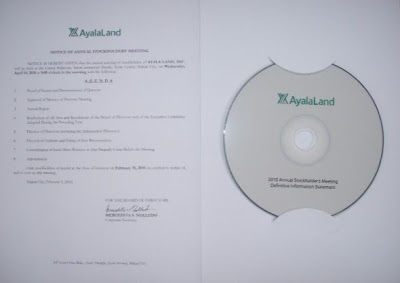Welcome Back to SMALLCOST: Our Journey to Restarting Online Trading
3 Important Lessons Learned from Our Previous Trading Experience
1. The Importance of Learning from Past Trading Experiences
Learning from past trading experiences is essential to improve one's trading skills and making better decisions in the future. By analyzing past trades, traders can identify patterns and tendencies in their behavior that might be hindering their success. They can also identify successful strategies that worked well in the past and apply them to future trades. Additionally, examining past trades can help traders identify their strengths and weaknesses and develop a plan to capitalize on their strengths while mitigating their weaknesses. Learning from past trading experiences is an ongoing process that requires reflection, analysis, and adaptation.
2. The Role of Luck in Trading
Luck in trading is often misunderstood as a random occurrence that cannot be controlled. However, the truth is that luck plays a crucial role in trading, but it is not entirely random. Rather, it is a byproduct of the consistent implementat
ion of a well-planned trading strategy. Luck comes from cultivating good trading habits and continuous learning to improve your trading decisions.
Successful traders understand that luck is not a stand-alone factor in trading. Instead, it is the result of discipline, analysis, and a willingness to learn from past mistakes. By sticking to a proven trading plan and avoiding impulsive decisions, traders increase their chances of success and reduce the impact of bad luck.
While luck can play a role in short-term trading results, it is long-term consistency that counts. By staying true to a trading strategy, traders can achieve consistent results and avoid being distracted by short-term fluctuations. Luck may help you catch a few good trades, but a well-crafted trading plan is what will sustain your trading career in the long run.
Our current
6% return on investment in online stock trading can be attributed purely to luck, as it is a case of a rising tide lifting all boats.
3. The Importance of Continued Learning
Continued learning is crucial in the field of online stock trading, as it enables traders to stay informed about market trends and developments. Without ongoing education, traders risk being left behind by new technology and strategies and may miss out on potential profits. Therefore, it is essential for traders to make learning a habit, and to stay up-to-date with the latest market news, trading techniques, and other relevant information. By doing so, traders can enhance their decision-making skills and make informed investment decisions that can ultimately lead to greater success in online stock trading.
Here are the 5 most valuable lessons that SMALLCOST has learned from a decade of experience:
- Luck can play a role in trading, but it is not a sustainable or reliable strategy. Traders must develop consistent and informed trading strategies to succeed in the long run.
- Saving and increasing trading capital is crucial for small traders to compete in online stock trading. This requires discipline and sacrifice, such as cutting unnecessary expenses and generating extra income.
- Continuous learning is essential for traders to stay informed about market trends, new technologies, and strategies.
- Consistent implementation of a trading strategy is critical for success in online stock trading. Traders must stick to their plans and not be swayed by emotions or external factors.
- Tracking and analyzing trading performance is crucial for traders to learn from their successes and failures, and to improve their strategies over time.
Restarting Our Online Trading Activities
Restarting our online trading activities can be an exciting and nerve-wracking experience. It is essential to take the time to review and update our trading strategies to ensure they are effective in the current market environment. Additionally, we should carefully evaluate our risk tolerance and set appropriate stop-loss levels to protect against significant losses. Adequate preparation and research can help traders navigate the market and increase their chances of success. It is important to approach trading with a level-headed and disciplined mindset, focusing on long-term success rather than short-term gains. By continuously learning and adapting to market conditions, traders can maximize their potential for profitability and achieve their trading goals.
Preparing to Restart: 5 Steps We Took
Here are 5 important steps that SMALLCOST took in preparing to restart our online trading activities:
- Conducted a thorough review: We reviewed our past trading activities and identified areas that needed improvement. We analyzed our past trades, assessed our risk management strategies, and studied market trends.
- Updated our knowledge: We recognized that the market is always changing and that it was important to keep up with new trends and technologies. We watched online tutorials, read books and articles, and more to update our knowledge.
- Set new goals: We established new trading goals that were specific, measurable, achievable, relevant, and time-bound (SMART). We made sure that our goals were aligned with our risk tolerance and our available trading capital.
- Developed a trading plan: We created a trading plan that outlined our entry and exit strategies, risk management rules, and other trading guidelines. We tested our plan using historical data and we will be making more adjustments as necessary as we continue forward testing our ideas.
- Increased our trading capital: We saved more money and reduced our unnecessary expenses to increase our trading capital. We transferred the funds to our trading account and made sure that we had enough margin to trade comfortably. This time around, we are planning to work with a small budget of Php10,000 to Php20,000. The funds will come from a combination of fresh capital and stocks that we still hold after liquidating some positions in the past.
By taking these steps, SMALLCOST was able to prepare hopefully effectively for our online trading activities, and we look forward to sharing our results with our readers in the future.
Changes and Improvements to Our Approach
The top 3 changes and improvements to our approach would include the following:
- Increased emphasis on continuous learning: We recognized the importance of staying up-to-date with the latest trends, news, and strategies in trading. As a result, we plan to dedicate more time to learning and research to improve our trading skills and decision-making.
- Strategic approach to trading: We learned from our past experiences that trading based solely on luck is not a sustainable approach. To increase our chances of success, we will implement a more strategic approach to our trades, guided by a well-defined trading plan.
- Better financial management: We recognized the importance of having sufficient trading capital and being able to manage our finances better. To achieve this, we plan to save more, reduce unnecessary expenses, and generate additional income streams to increase our trading capital.
Our Performance Targets
Oliver Velez, a renowned stock trader and author, emphasizes that the performance targets of a starter stock trader should focus on consistency rather than profits.
Win Rate
According to Oliver Velez, a beginner trader's primary goal should be to achieve a 60-70% win rate and a risk-to-reward ratio of 1:2. To us, this means that for every peso we risk, we should aim to earn two pesos in profit. By achieving this level of consistency in our trades, even beginner traders can build a strong foundation and gradually increase their profits over time.
Risk-To-Reward Ratio
The risk-to-reward ratio of 1:2 means that for every unit of risk taken, the trader aims to gain two units of reward. For example, if a trader risks Php 1,000 on a trade, their target reward should be at least Php 2,000. This ratio is used to help traders ensure that their potential gains outweigh their potential losses and to maintain a positive expectancy in their trading strategy over the long run. By using a risk-to-reward ratio of 1:2 or better, traders can potentially be profitable even if they have a winning percentage of less than 50%.
Here's the formula and an example computation for the risk-reward ratio we are using:
Formula:
Risk-to-Reward Ratio = (Potential Loss) / (Potential Profit)
Example:
Let's say we are buying a stock at Php28 and we set our stop-loss at Php27.00. We also set a reward target of Php30. The potential profit is Php2 (Php 30 - Php 28), while the potential loss is Php 1 (Php28 - Php27).
Using the formula:
Risk-to-Reward Ratio = (Potential Loss) / (Potential Profit)
Risk-to-Reward Ratio = Php 1 / Php 2
Risk-to-Reward Ratio = 1:2
In this example, we have a risk-to-reward ratio of 1:2, which means the potential profit is twice the size of the potential loss.
More Online Trading Performance Measures
We are also setting other performance measures for our online trading activities, including:
- Investor Type: Aggressive Investor
- Trading Style: Swing Trader
- Holding Period: hours to days
- Stock Bias: Ayala Land, Inc. (ALI)
- Buying Power: Php 10,000 to Php 25,000
- Minimum Cumulative Profit: Php1,500.00
- Minimum Number of Trades: 200
- Maximum Share Exposure: 500
For example, let's say we have a total trading capital of Php 25,000 and we want to invest in Ayala Land, Inc. (ALI). Let's imagine, the current market price of the stock is Php 25 per share. At this price, ALI trades at a board lot of 100 shares and a tick size of Php 0.05.
If we have a maximum share exposure of 500, then we can only buy up to Php 12,500 worth of ALI stock equivalent to a net amount of Php12,536.88 including transaction cost.
To compute for the maximum number of shares we can buy, we can multiply the maximum share exposure of 500 shares by the current market price of Php 25 per share, which gives us Php 12,500 exposure.
Therefore, our maximum share exposure of 500 shares for ALI is around 50% of our total trading capital or buying power.
Daily Loss: Php 200
Continuing the above example, if we bought 500 shares of ALI at Php 25 per share for a total of Php12,536.88 including transaction cost, we should sell at a stop-loss of Php 24.90 to limit our daily loss to Php 200.
Tracking Our Progress: Recent Performance Results
In tracking our investments, we would use the method described in the related post Measuring Our Stock Trading Profit by The Starter Investor Blog. In summary:
Trading Profit = Previous Selling Level - New Buying Level
Analysis of Performance Results
In analyzing the performance results of our stock trading activities, we need to look beyond the profits or losses we have incurred.
- It is important to examine our trading behavior, risk management, and decision-making processes. By keeping track of our trades and maintaining a trading journal, we can identify patterns and tendencies that may have contributed to our results.
- We also need to evaluate the effectiveness of our trading strategy and make necessary adjustments to improve our performance.
- Furthermore, it is crucial to maintain discipline and manage our emotions to avoid making impulsive and irrational decisions. By conducting a thorough analysis of our performance results, we can gain valuable insights and continuously improve our trading skills.
The Journey and the Road Ahead
Over the years, SMALLCOST has experienced the ups and downs of the stock market. From our early days of trading with a small capital, we have learned the importance of proper risk management, discipline, and continuous learning.
Reflecting on Our Journey So Far
Reflecting on our journey so far, we have come a long way in terms of our understanding of the stock market and our trading performance. We have learned the importance of continuous learning, risk management, and discipline in our approach. Our journey has also highlighted the role of luck in trading and the importance of learning from past experiences. We have identified changes and improvements to our approach and set performance targets to guide our trading activities. Moving forward, we remain committed to our trading goals and confident in our ability to navigate the challenges ahead.
The Road Ahead: Join Us on Our Journey
Looking ahead, we are excited to continue our journey in the stock market. We know that there will be challenges and risks along the way, but we are committed to applying the lessons we have learned and improving our trading strategies. We will also continue to share our experiences and insights through our blog, hoping to inspire and help others who are also on their journey to financial freedom. So join us, as we navigate the ups and downs of the stock market and work towards achieving our goals.












